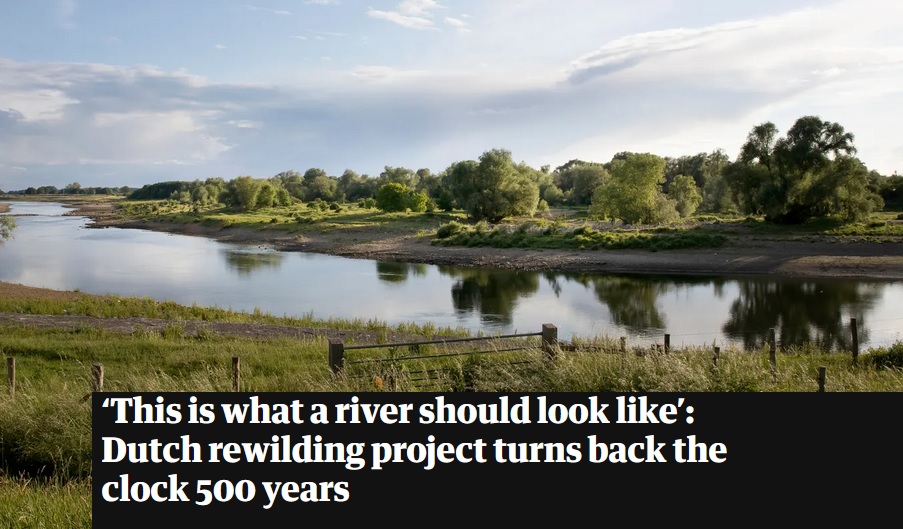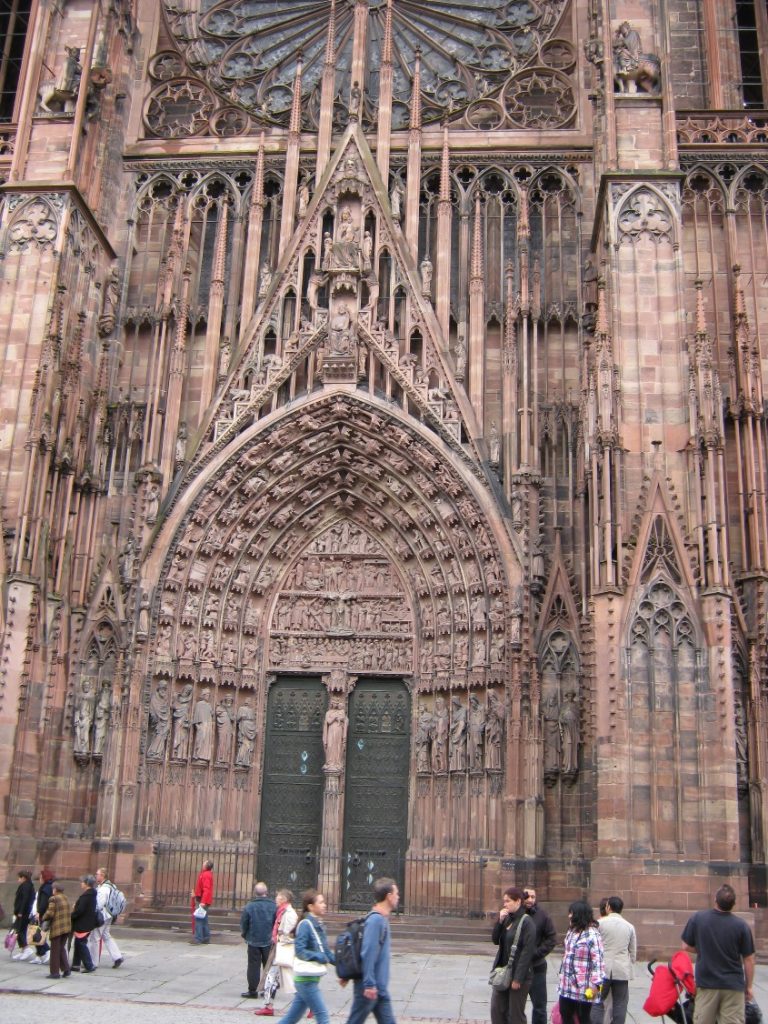What can we learn from an inspiring long-term vision of river restoration being implemented in the Netherlands?
The other day I was forwarded a fascinating story about a large-scale river restoration project in the Netherlands, which got me thinking about a number of things that relate to not just NGT’s work here in Australia, but also the way that the environmental sector in this country generally conceives of and implements waterway and wetland restoration projects.
You can read the article by clicking here, or clicking on the image below.
There are three themes I will share with you briefly to give you a sense of some of my reflections on this really interesting article.
The first thing that leaped out to me is the project time frame – because this project has been unfolding for decades:
“The planning phase for the Border Meuse began in 1990, with work starting in 2007 and due to finish in 2027”.
Think about that for a moment… this is an almost 40 year time horizon for a restoration project, where the majority of on-ground works didn’t even start until about half way through that 40 year window of time. Of course Europe has some fascinating stories of persistence in delivering mega-projects – the most extreme built heritage example I can think of is the story of Strasbourg Cathedral, in France. Construction of this amazing building began in the year 1015, and was not fully completed until 1439. Imagine being there at the opening and knowing that the founders of this concept began the journey more than 400 years earlier!
While I am not suggesting we go quite to this extreme, how often in Australia do we think of designing and implementing the really difficult, but more ambitious and aspirational on-ground restoration projects, where works might occur and ultimate success could be measured over decades?
Of course we all know intuitively that much of what we do is contributing to bigger picture outcomes over the long-term, but this usually doesn’t make a strong selling point when you are trying to get a new concept off the ground or seek funding. After all, funders usually want immediate results. This can mean some extremely worthwhile concepts never even get imagined or considered – because the funding context shapes (and I would argue constrains) the way we think about what is even possible in the first place.
One of the challenges is that the environmental sector in Australia relies on a funding model design and way of measuring outputs that are usually very short-term.
By way of example, the longest grant funding project we have ever been able to deliver at NGT were two Biodiversity Fund projects which began in 2012 and were funded by the Australian Government for five years. Most of the grants we deliver tend to last between one and three years. This means that for longer term restoration projects (e.g. Walker Swamp, Mt Burr Swamp, Eaglehawk Waterhole or some of our other reserves), we need to adopt new measures every few years that can continue to either expanding the area of works at these sites, or undertaking discrete new tasks which add further value. Of course all of this proposed action needs to be readily measurable and reported on within the grant funding time frame.
This system has its challenges when a five, ten or twenty year restoration plan needs to then be divided into one to three year bite sized chunks. This carries with it an inherent risk of losing momentum every time we have a break in funding continuity, or even sometimes having to avoid or delay key tasks that are needed for restoration because they genuinely don’t fit within the funding timeframes or guidelines of the day.
On a positive note, one local Australian example of what is becoming a multi-decadal, coordinated landscape restoration initiative, is the Mulloon Institute’s demonstration project area for landscape rehydration in the agricultural setting within the Mulloon Creek catchment, not far from Canberra. While NGT has been busy restoring wetlands, the Mulloon Institute are doing fantastic, virtually parallel, work in helping to reverse the detrimental effects of erosion on landscape hydrological function. They are a terrific team and we have a lot in common.
The second thing that caught my attention in the Netherlands case study is project scale. Being prepared to literally rework a long-modified landscape to better capitalise on natural processes over a 50 km section of river is bold by anyone’s definition. Of course scale is also intimately linked to the previous point, because big ideas that cover big areas, will inherently take longer to deliver.

The final thing that I found fascinating about this story is its economic model:
“The project is being paid for mainly by companies wanting to extract sand and gravel from the riverbed, which has helped widen the river and lower riverbanks and so expand the floodplain. Because of the involvement of industry, Border Meuse was the only large river restoration project that wasn’t withdrawn during the 2008 financial crash.”
While it sounds like a very specific solution that clearly would not work or be appropriate everywhere, this financing model is obviously more robust and consistent than the rollercoaster funding model that most environmental projects rely on. Finding enough common ground and a means to partner with industry seems to be a big reason for the longevity and success of this project.
If you would like to learn more about the project, Rewilding Europe also has information available here, and a pdf report describing the first 30 years of the project can be found at the bottom of this article.
All in all, this story is a great inspiration for us to think about how we might tackle complex environmental issues – in every sense.
So my take home message is: let’s use lateral thinking and problem solving, to design, fund and implement tailor-made solutions that might make it possible to tackle some of the larger scale and more complex challenges facing our waterways and wetlands. Given the long time horizons required to make these ideas happen, it also seems to me that the best time to get started is now.


